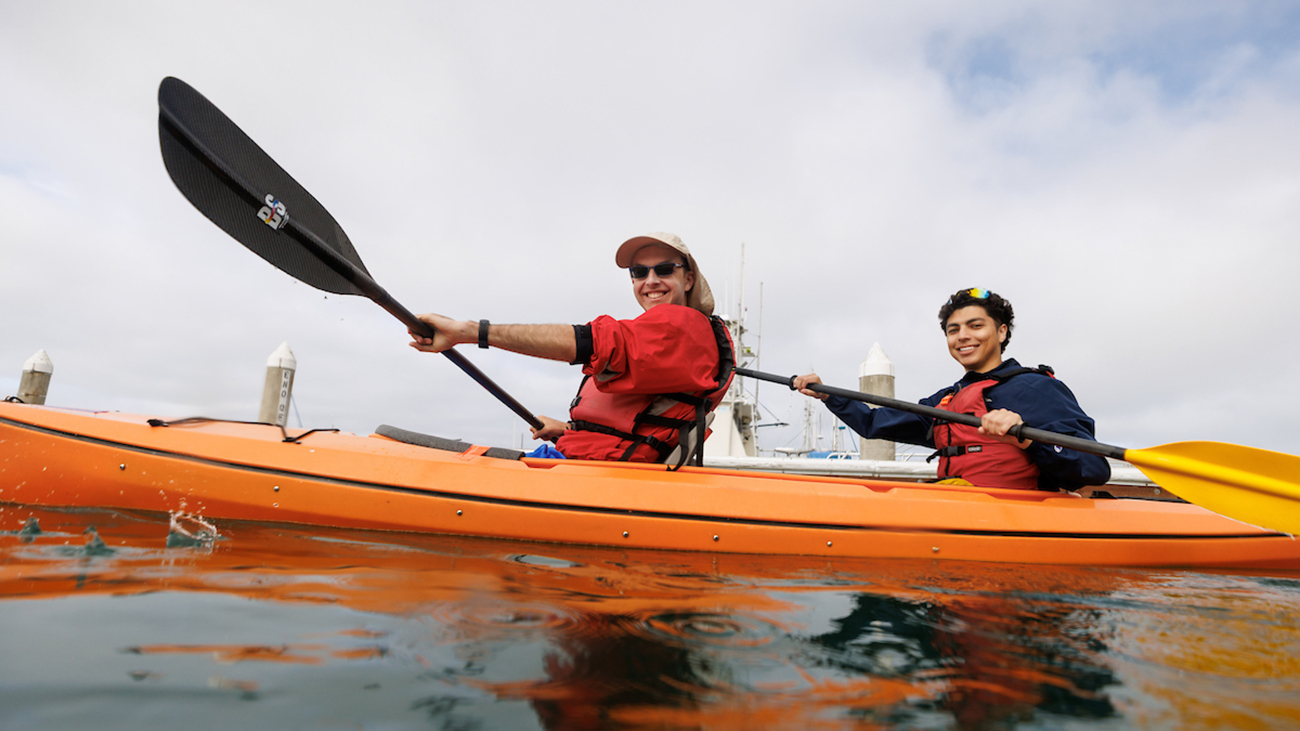
In 1999, kinesiology professor emeritus Kevin Taylor first launched a program that brings together community members with physical disabilities and Cal Poly kinesiology students — through kayaking.
A quarter century later, the Adapted Paddling Program (APP) is still going strong, successfully merging Cal Poly faculty and students, and community volunteers, with local people living with disability so they can learn from each other and foster invaluable bonds.
The program is guided by professional kayaking instructors and offers valuable benefits including social activity, education and appreciation for the outdoors.
“In working with people with disabilities, students learn to see past the disability and connect with the human being,” said Taylor, who retired in 2023 as the director of Cal Poly’s School of Education. “It creates a deep and meaningful learning experience for the students, connecting theory from their lectures to a very practical application.”
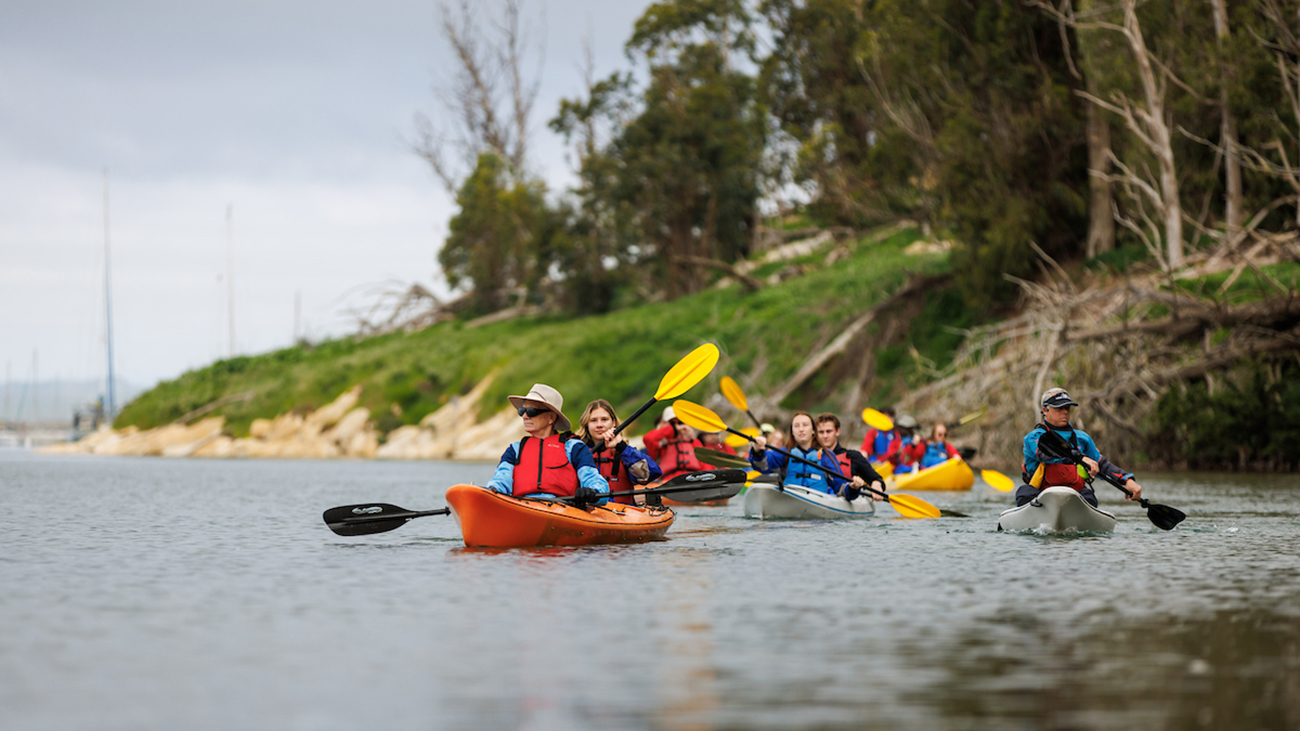
Participant Bruce Carr, in the front, enjoys a recent outing at Morro Bay with the group.
Bruce Carr, a participant, has joined Cal Poly students and faculty in kayaking sessions at the Anderson Aquatic Center pool on campus and in ocean waters off the Central Coast.
“I get to enjoy nature being on the water,” said Carr, who has multiple sclerosis that affects his leg and core mobility. “This program has helped me to fill a void of not participating in activities I used to do without restrictions. It gives me that sense of freedom and self-worth that I can help students experience learning in a meaningful environment.”
Each quarter kinesiology majors enrolled in the KINE 307 Adapted Physical Activity course select from one of four labs. If they select the adapted paddling lab, they learn to adapt kayaking equipment and skills to be inclusive of people with a range of abilities.
Students then work with a lab partner to make individualized adaptations for a client in the APP. One student from each pair paddles with their assigned client while the “spare” students paddle in safety boats.
Students study proper posture support, including seating for clients that can include soft or rigid foam padding. Students also work to create ease in getting in and out of the kayaks for clients who use wheelchairs, according to Jafra D. Thomas, a kinesiology and public health professor who co-coordinates the program.
Clients are also equipped with a personal flotation device for safety and protection from elements like sun and wind exposure. Carbon fiber paddles are designed to be lightweight to minimize paddling fatigue.
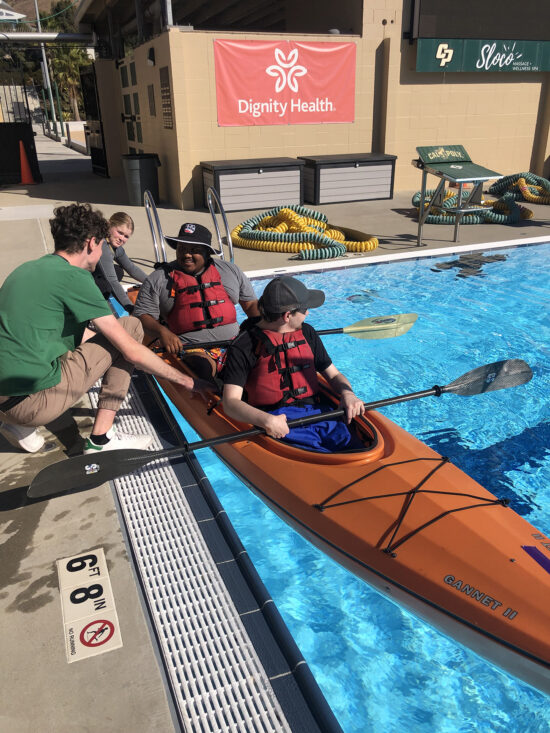
Student instructors Luke Hansen, front, and Rena Keyes, back, launch a practice paddle for participant Emrys Lincoln (front seat), and student instructor Jason Contreras (back seat) in at Cal Poly’s Anderson Center Pool.
“Students learn how to anticipate the different comfort and functional needs of individuals with a physical disability and some pragmatic ways to adapt the kayaks so that individuals can be comfortable, but they can also participate safely,” Thomas said.
Clients range in age from children to seniors. In preparation for the events, which typically include a practice session in the pool and an outing on a Saturday in Morro Bay, the program hosts a welcome event for the students and client participants to get to know one another and build rapport.
“On the academic side, the program is considered a service-learning project, where students learn perspectives of disability and thinking critically to evaluate environments and run a program that’s equitable and inclusive so everyone can participate,” Thomas said.
Recent participants have included individuals with Down Syndrome, multiple sclerosis and cerebral palsy. Over the years, clients have included those with quadriplegia, paraplegia, amputation and muscular dystrophy.
“Clients will paddle as much as they want to,” Thomas said. “Some participants will choose to perform the paddling stroke, while others hold on to their paddle and their assistant instructor would do quite a bit of the paddling and the client goes for a leisure ride.”
It feels good to see her happy and adapted paddling is a reason for her to go out with joy.
Luke Hansen is a returning assistant student instructor and kinesiology major. During the November event, he witnessed sheer joy as he observed the participants and their families from his safety boat, staying ready to help if anything went wrong.
“I remember the smiles not just on all the participants, but on their families watching from the shore,” Hansen said. “From that third-person perspective on the water, I could visually see the pride on the faces of the participant’s supporters, seeing their loved one be an equal to the Cal Poly volunteers and enjoying a beautiful morning out on the bay.”
Hansen said that his experience growing up with a younger brother who has a disability was an inspiration for his involvement in the APP program and continued advocacy for equity in sports.
“Beyond just kayaking in Morro Bay, APP is able to bring something that seems inaccessible and make it a reality,” Hansen said. “APP removes the stigmas, barriers, and concerns and allows the participant to do one simple thing: go kayaking just like any other person.”
A mother of a participant in the program was delighted when the Cal Poly students sang for her daughter. She said her daughter also watched a video “over and over” from the event, and it brought a smile to her face.
“It feels good to see her happy and adapted paddling is a reason for her to go out with joy,” said the mom, who asked not to be named. “She has a muscle ache condition and, with good attention and patience, she is able to overlook her pain for a while.”
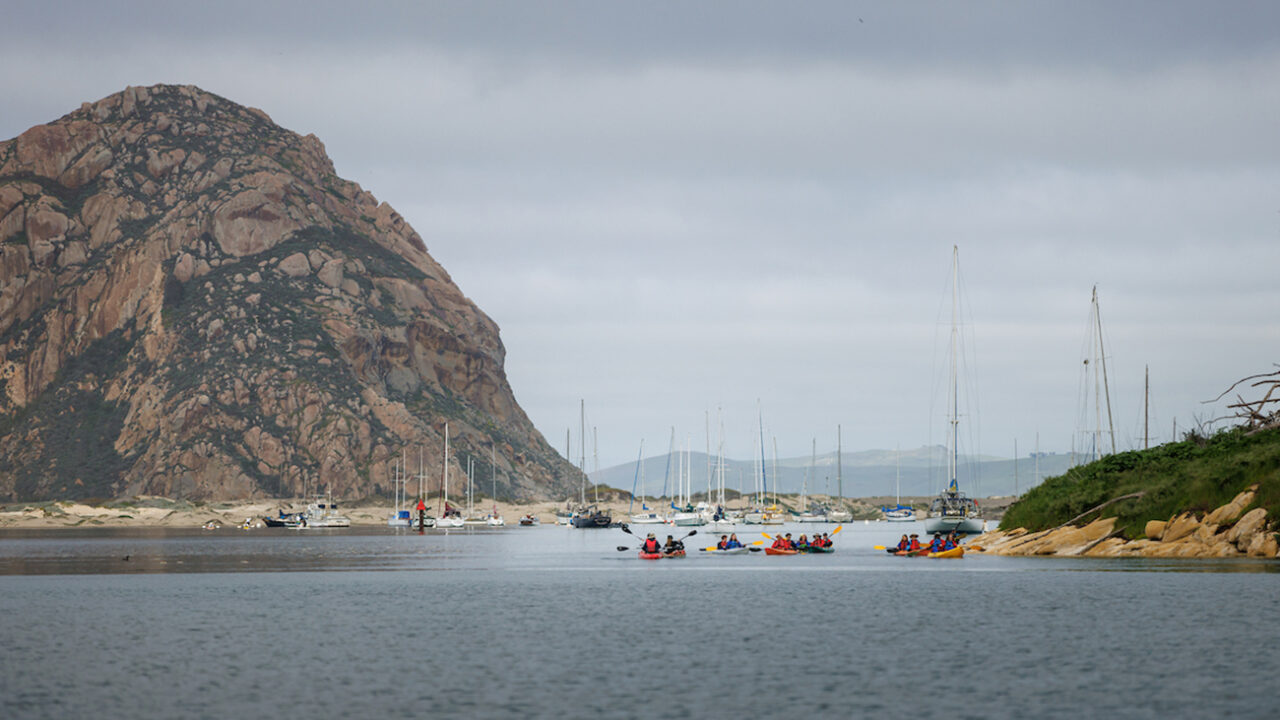
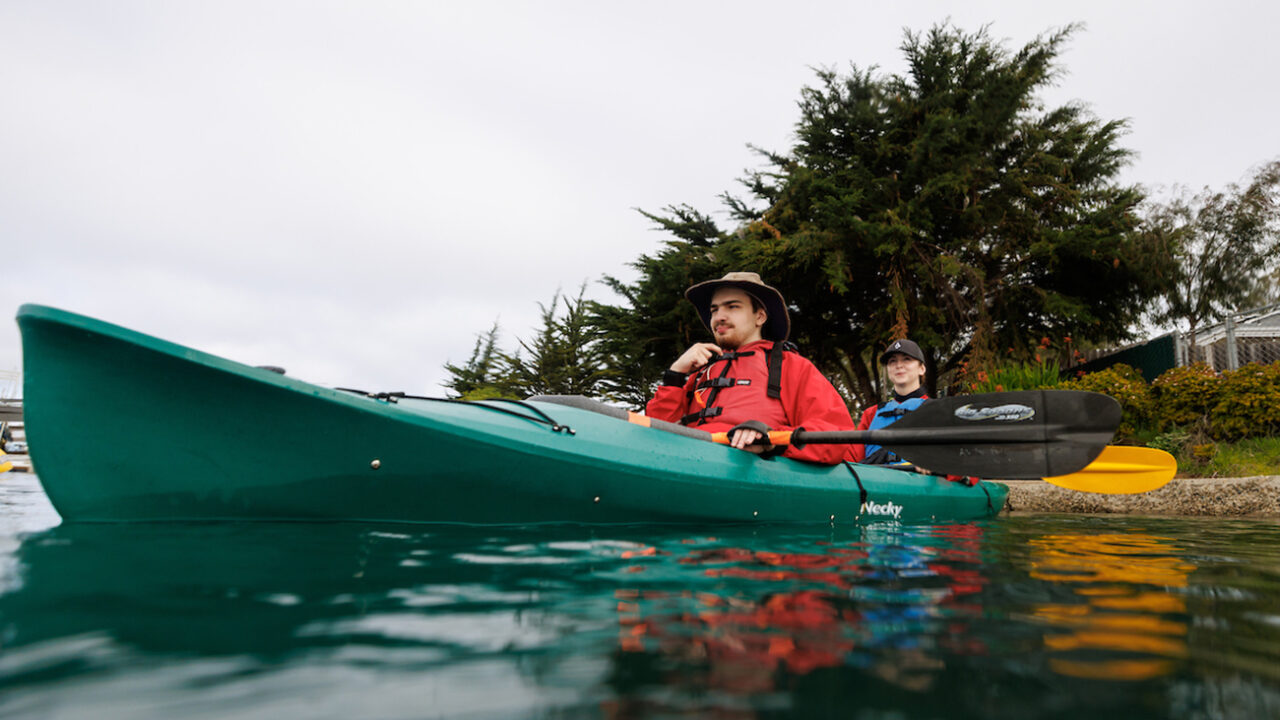
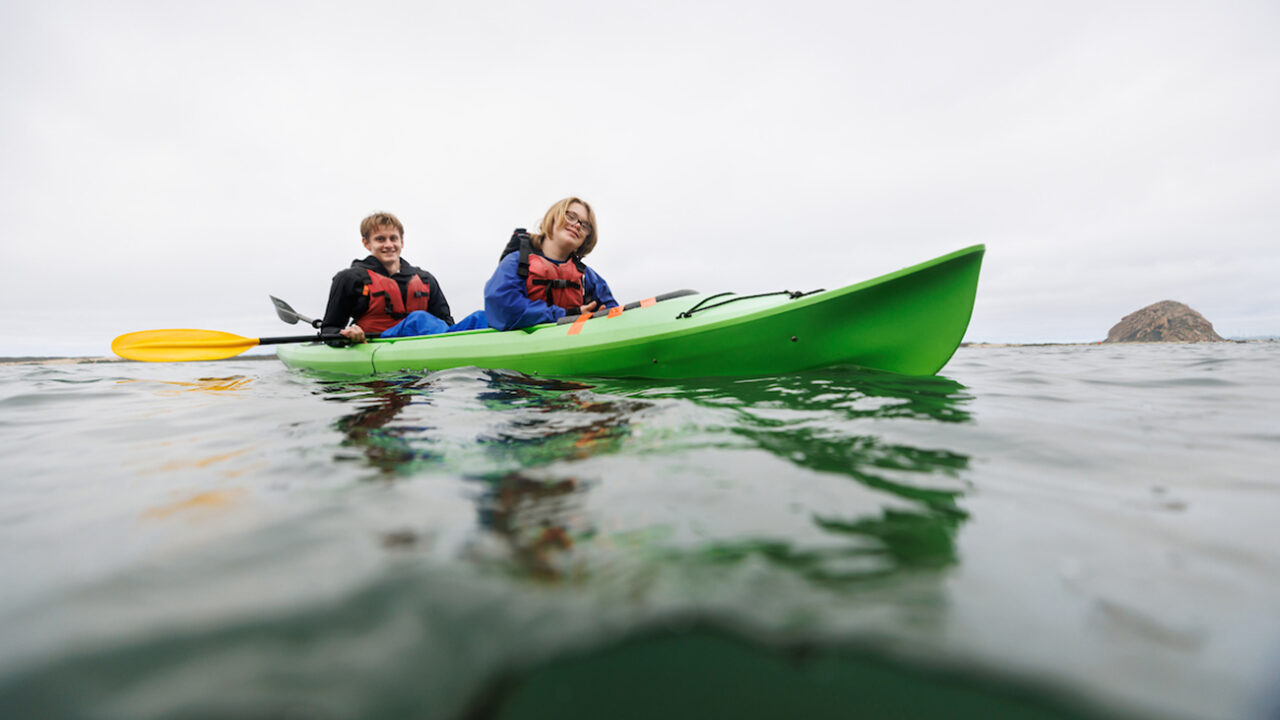
Taylor developed the program in collaboration with Tom Reilly, the owner of Central Coast Kayaking, and Jeff and Monica Clark. Jeff was a kayaking instructor and Monica was a physical therapist.
Taylor and Reilly now rotate as instructors for the adapted padding, along with John P. Lee, a certified occupational therapist who works to provide accommodations to students with disabilities in Cal Poly’s Disability Resource Center. Both Reilly and Lee, who started in the adapted paddling program as a participant, have been directly involved with the APP as volunteer instructors for over 20 years.
A spinoff from the work also has included a SoloQuad Conversion Project, funded in collaboration with the College of Engineering. One such mechanism allowed the client to use a mouthpiece mechanism, activating electronic switches that send signals to the computer.
“Alumnus Bryan Gingg used a ‘sip and puff’ control mechanism to pilot one of our kayaks that was fitted with an electric motor,” Taylor said. “The project was enormously impactful on many kinesiology and engineering students who worked on it over the years.”
The Bailey College of Science and Mathematics Inclusion and Equity Fund has helped cover costs of the program’s welcome events and other needs.
“The DEI funding helps create a comfortable, familiar, social environment and to deliver the program with instructional purpose,” Thomas said.
“The program is grounded in the enrichment of peoples’ lives; the students see the impact it has on the clients, and that impact really grounds their learning,” Taylor said. “It’s Learn by Doing at its most powerful.”
To contribute to the Inclusion and Equity Fund, which provides support for projects and activities across Bailey College, visit giving.calpoly.edu.


